Picture this: sweltering summer heat or bone-chilling winter nights, and you’re desperate for a reliable way to keep your home comfortable. That’s where the ApooDr mini split comes in, and let me tell you, it’s been a lifesaver for me.
This ductless system is efficient, quiet, and surprisingly affordable, making it a no-brainer for anyone looking to upgrade their home’s heating and cooling. Whether you’re cooling a single room or zoning your entire house, the ApooDr delivers.
Trust me, you’ll want to consider this for your next HVAC purchase.
My Experience With The ApooDr Mini Split
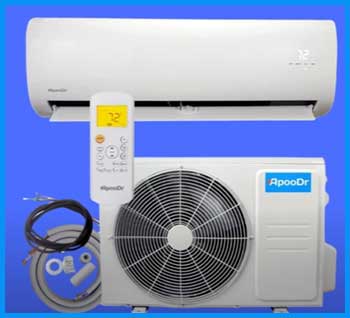
When I first decided to replace my old window AC unit, I was skeptical about mini splits.
They sounded fancy, expensive, and maybe a bit too high-tech for my modest home.
But after researching, I landed on the ApooDr mini split, and I’m so glad I did.
Installing it in my living room was a breeze—well, not literally, since I hired a professional, but the process was smoother than I expected.
The unit arrived with a pre-charged line set, which cut down on setup time, and the installer had it up and running in a few hours.
The first thing I noticed was how quiet it was. My old window unit sounded like a lawnmower, but the ApooDr hums so softly I barely notice it. I got the 12,000 BTU model, perfect for my 500-square-foot living space, and it cools the room in minutes.
During winter, the heat pump kicked in, keeping things cozy even when temperatures dipped below freezing. I control it with a sleek remote, and the Wi-Fi feature lets me adjust settings from my phone—super convenient when I’m heading home from work and want the house cool.
What really sold me was the energy efficiency. My electric bill didn’t spike like I feared; in fact, it’s lower than when I relied on window units and space heaters. The ApooDr’s inverter technology adjusts the compressor speed to match the room’s needs, so it’s not wasting energy.
I’ve been using it for over a year now, and it’s been reliable through humid summers and chilly winters. My only gripe? The manual could be clearer for DIY folks, but that’s a small price to pay for such a solid system.
Pros of The ApooDr Mini Split
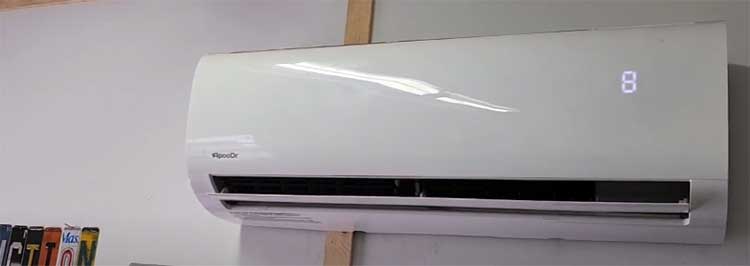
- Energy Efficiency That Saves You Money
One of the biggest reasons I love my ApooDr mini split is how it keeps my energy bills in check. The system boasts a high Seasonal Energy Efficiency Ratio (SEER) of 20, which means it uses less electricity to cool or heat my home compared to traditional HVAC systems. The inverter technology is the real hero here—it adjusts the compressor’s speed based on the room’s temperature, so it’s not constantly running at full blast.
Since installing it, I’ve noticed a drop in my monthly bills, especially compared to my old window unit that guzzled power like nobody’s business.
- Quiet Operation for Peaceful Living
If you’ve ever lived with a noisy AC, you know how annoying it can be. The ApooDr is a game-changer in this department. Its indoor unit operates at around 30 decibels—about as loud as a whisper.
I can watch TV, have a conversation, or sleep without being disturbed by a rattling hum. Even the outdoor unit is discreet, so my neighbors haven’t complained about noise, which is a win in my book.
- Flexible Installation for Any Space
The ApooDr’s ductless design makes it incredibly versatile. I didn’t need to tear up my walls for ductwork, which saved me a ton of hassle and money. Whether you’re cooling a single room, a garage, or an entire home, this system adapts.
I went with a single-zone unit, but multi-zone options let you control different rooms independently. It’s perfect for homes like mine without existing ducts or for additions where running ductwork isn’t practical.
- Smart Features for Modern Convenience
I’m a sucker for tech, and the ApooDr doesn’t disappoint. The Wi-Fi connectivity lets me control the unit from my phone, so I can turn it on before I get home or tweak the temperature while I’m lounging on the couch.
It also integrates with Alexa, which feels like living in the future. The remote is intuitive, with settings like sleep mode and turbo cooling that make it easy to customize my comfort.
- Year-Round Comfort with Heat Pump
Unlike some mini splits that only cool, the ApooDr doubles as a heater. Its heat pump works efficiently down to about 5°F, which covers most winters where I live.
I’ve used it through cold snaps, and it keeps my living room toasty without relying on bulky space heaters. This dual functionality means I’m covered for all seasons, which is a huge plus for anyone looking to streamline their HVAC setup.
Cons of The ApooDr Mini Split
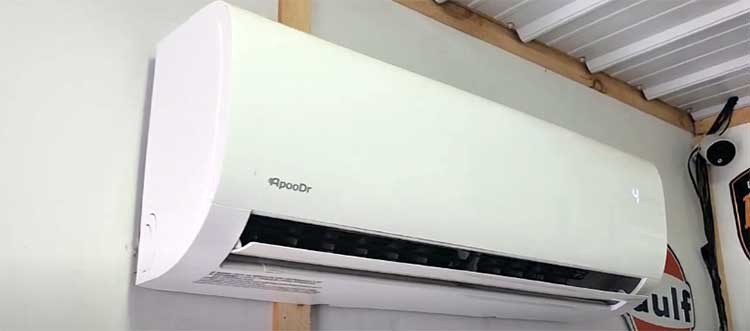
- Upfront Cost Can Sting
Let’s be real: mini splits aren’t cheap, and the ApooDr is no exception. The unit itself, plus professional installation, set me back about $2,500 for my single-zone system. While it’s not the priciest option out there, it’s still a significant investment.
If you’re on a tight budget, you might wince at the upfront cost, though I’ve found the energy savings help offset it over time.
- Professional Installation Often Required
While some mini splits, like certain MRCOOL models, are DIY-friendly, the ApooDr typically needs a professional touch to ensure proper setup and warranty coverage. I didn’t mind hiring someone, but it added to the cost.
If you’re handy and hoping to save by installing it yourself, you might find the process tricky without HVAC experience, especially when it comes to vacuuming the refrigerant lines.
- Limited Aesthetic Options
The ApooDr’s indoor unit is sleek, but it’s not winning any design awards. It’s a standard white box that blends into most rooms but doesn’t have the stylish flair of, say, LG’s Art Cool models with their glass finishes.
If aesthetics are a big deal for you, you might wish for more color or design options to match your home’s vibe.
- Customer Support Could Be Better
My experience with ApooDr’s customer service was hit-or-miss. When I had a question about the Wi-Fi setup, it took a couple of days to get a response, and the answer wasn’t super detailed.
While the unit itself has been reliable, I’ve read reviews from others who struggled to get timely help with maintenance or warranty issues. It’s not a dealbreaker, but you might need patience if you run into problems.
Maintenance Tips For Your ApooDr Mini Split
- Keep Those Filters Clean
One of the easiest ways to keep your ApooDr running smoothly is to clean the indoor unit’s filters every 4–6 weeks. I learned this the hard way when I noticed the airflow weakening after a few months.
Popping out the filters is simple—just open the front panel, pull them out, and rinse them with warm water. Let them dry completely before putting them back. Clean filters mean better efficiency and air quality, so don’t skip this step.
- Clear the Outdoor Unit
The outdoor condenser can get clogged with leaves, dirt, or snow, especially if it’s near trees or low to the ground. I check mine every couple of months, brushing off debris with a soft broom.
If you live in a snowy area, make sure ice doesn’t build up around the unit. Keeping it clear ensures proper airflow and prevents the system from overworking, which can save you from costly repairs.
- Monitor the Condensate Drain
Mini splits produce condensation, and the ApooDr is no different. The condensate drain needs to stay clear to avoid water backup, which can damage your walls or reduce efficiency. I check the drain line every few months, using a wet/dry vacuum to clear any gunk.
If you notice water pooling near the indoor unit, it’s a sign the drain needs attention. A professional can help if you’re not comfortable tackling this yourself.
- Schedule Annual Professional Checkups
While I handle basic maintenance, I schedule a professional HVAC technician once a year to inspect the system. They check refrigerant levels, test the electrical components, and ensure everything’s running efficiently.
My first checkup caught a minor refrigerant leak early, saving me from a bigger headache. It’s worth the $100–$200 cost to extend the unit’s lifespan and avoid unexpected breakdowns.
- Use the Smart App for Diagnostics
The ApooDr’s app isn’t just for controlling the temperature—it can also alert you to potential issues, like low efficiency or system errors. I check it periodically to make sure everything’s in the green.
If the app flags something unusual, I call my technician sooner rather than later. It’s like having a built-in early warning system, which has saved me from ignoring small problems that could’ve grown.
Comparison of ApooDr Mini Split With Other Brands
- ApooDr Vs. Mirage Mini Split

When I was shopping for a mini split, Mirage caught my eye for its budget-friendly price, often $300–$500 less than my ApooDr’s $2,500 setup.
Mirage units are solid for basic cooling and heating, with SEER ratings around 16–18, but they fall short of ApooDr’s 20 SEER, meaning higher energy bills over time.
Mirage’s indoor units are a bit noisier, hovering around 35–40 decibels compared to ApooDr’s whisper-quiet 30 decibels. While Mirage offers decent warranties (5 years on compressors), their customer support is notoriously slow, much like my experience with ApooDr.
I chose ApooDr for its superior efficiency and quieter operation, but Mirage is a good pick if you’re pinching pennies and don’t mind a little hum.
- ApooDr Vs. ZOKOP Mini Split
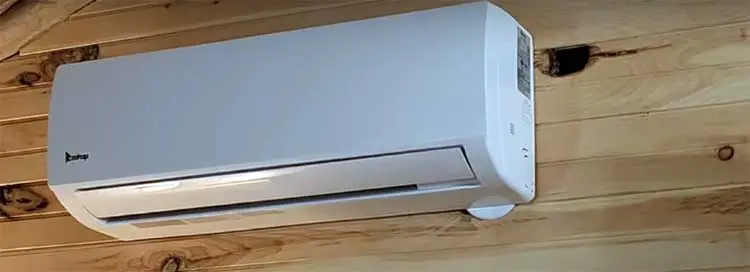
ZOKOP mini splits are another budget contender, often priced similarly to Mirage, around $1,800–$2,200 for a single-zone system. They’re marketed as DIY-friendly, with pre-charged lines like ApooDr, but I found their installation instructions less clear, which could trip up non-professionals.
ZOKOP’s SEER ratings max out at 19, slightly below ApooDr, and their heat pumps struggle below 10°F, whereas ApooDr holds strong at 5°F. A friend who owns a ZOKOP mentioned occasional cooling inconsistencies, something I’ve never had with ApooDr.
I went with ApooDr for its reliability and smart features, like Wi-Fi control, which ZOKOP lacks. If you’re on a tight budget and live in a mild climate, ZOKOP might work, but ApooDr feels more polished.
- ApooDr Vs. Sea Breeze Mini Split
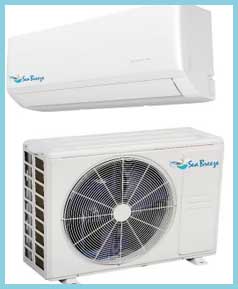
Sea Breeze mini splits are less common but worth considering, especially for coastal homes where corrosion resistance is key.
Priced close to ApooDr at $2,300–$2,800, they offer similar 20 SEER efficiency and quiet operation at 32 decibels.
However, Sea Breeze’s heat pumps are less robust, faltering below 15°F, which was a dealbreaker for me since I need winter heating.
Their design is functional but bulkier than ApooDr’s sleek indoor unit, and smart features are limited to basic remotes—no Wi-Fi or Alexa integration.
ApooDr won me over with its year-round performance and modern controls, but Sea Breeze is a strong choice for humid, salty environments.
- ApooDr Vs. Daizuki Mini Split
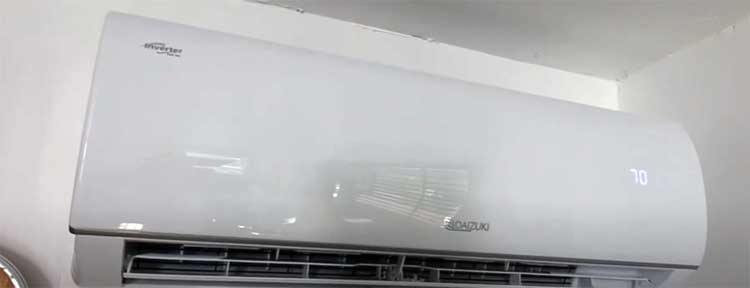
Daizuki mini splits are a mid-range option, costing about $2,000–$2,600, nearly identical to ApooDr. Their SEER ratings match ApooDr’s at 20, and they’re quiet at 31 decibels, making them a close competitor.
Daizuki’s strength is its multi-zone options, ideal for larger homes, but their single-zone units, like mine, don’t offer much over ApooDr. Their customer service gets better reviews than ApooDr’s, which is a plus, but their app interface feels clunky compared to ApooDr’s smooth Wi-Fi controls.
I stuck with ApooDr for its intuitive tech and consistent performance, but Daizuki is a solid alternative if you prioritize support and multi-zone flexibility.
Frequently Asked Questions (FAQ)
Mitsubishi consistently tops the list for reliability, thanks to its durable build and long lifespan of 15–20 years with proper maintenance. Their units rarely break down, and their 12-year warranties offer serious peace of mind. Daikin and Fujitsu are close contenders, with strong track records and high customer satisfaction. The ApooDr, while reliable for its price, doesn’t quite match Mitsubishi’s long-term durability but still performs well for most homes.
With regular maintenance, a Fujitsu mini split can last 15–20 years, similar to Mitsubishi. Cleaning filters every 4–6 weeks and scheduling annual professional checkups are key to maximizing its lifespan. Fujitsu’s robust warranties (10–12 years) and low-temperature performance make it a solid choice for long-term use, especially in colder climates.
Mini splits, including the ApooDr, are designed for energy efficiency, often reducing electric bills compared to window units or central HVAC systems. Their inverter technology adjusts power usage to match demand, saving energy. However, your bill depends on usage, climate, and insulation. In my experience, my bill dropped slightly compared to using multiple window units, but heavy use in extreme weather could increase costs.
The cost to install a mini split varies widely, typically ranging from $1,500 to $6,000 for a single-zone system, including the unit and professional installation. My ApooDr setup cost around $2,500, which is mid-range. Multi-zone systems or high-end brands like Mitsubishi can push costs higher. Factors like location, unit size, and installer rates affect the price, so get multiple quotes.
Conclusion: Why You Should Buy The ApooDr Mini Split?
After a year with the ApooDr mini split, I can confidently say it’s a fantastic investment for anyone seeking efficient, quiet, and versatile home comfort.
It’s not perfect—customer service could improve, and the upfront cost isn’t pocket change—but the energy savings, ease of use, and year-round performance make it worth every penny.
If you’re ready to ditch noisy window units or outdated HVAC systems, the ApooDr is a reliable, modern solution you’ll love. Go for it—you won’t regret it.
